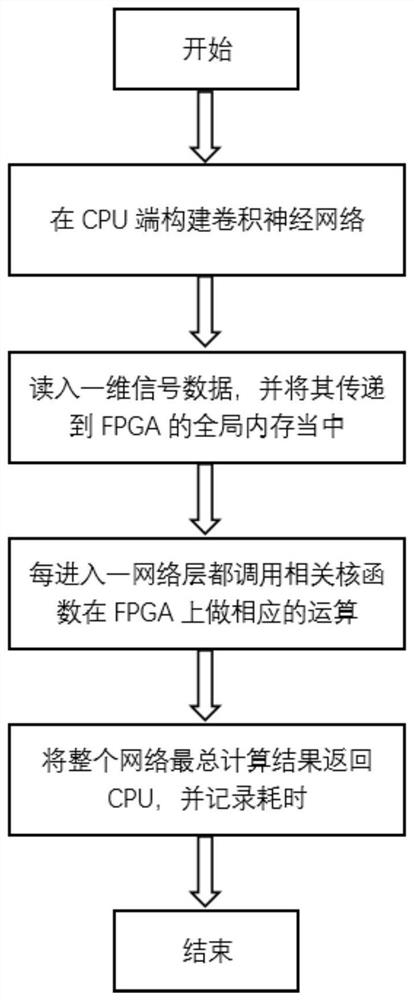FPGA one-dimensional signal identification neural network acceleration method based on OpenCL
A neural network and signal recognition technology, applied in the field of convolutional neural network acceleration, can solve problems such as system performance degradation
- Summary
- Abstract
- Description
- Claims
- Application Information
AI Technical Summary
Problems solved by technology
Method used
Image
Examples
Embodiment Construction
[0020] The specific implementation manner of the present invention will be further described in detail below in conjunction with the accompanying drawings and specific examples.
[0021] Such as Figure 1~2 As shown, the OpenCL-based FPGA one-dimensional signal recognition neural network acceleration method specifically includes the following steps:
[0022] 1) Construct a one-dimensional convolutional neural network on the CPU host side;
[0023] 2) read the one-dimensional signal data with a size of 8192*1 and the weight and bias data used for signal data convolution obtained from training into the host memory from the text file;
[0024] 3) Calculate the first convolutional layer of the convolutional neural network:
[0025] 3a) read the signal data obtained after the signal data in step 2) through edge extension processing, and the weight and bias data used by the convolution layer into the FPGA global memory;
[0026] 3b) Call the convolution kernel function to let the...
PUM
 Login to View More
Login to View More Abstract
Description
Claims
Application Information
 Login to View More
Login to View More - R&D
- Intellectual Property
- Life Sciences
- Materials
- Tech Scout
- Unparalleled Data Quality
- Higher Quality Content
- 60% Fewer Hallucinations
Browse by: Latest US Patents, China's latest patents, Technical Efficacy Thesaurus, Application Domain, Technology Topic, Popular Technical Reports.
© 2025 PatSnap. All rights reserved.Legal|Privacy policy|Modern Slavery Act Transparency Statement|Sitemap|About US| Contact US: help@patsnap.com



